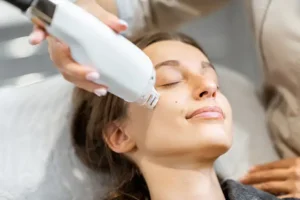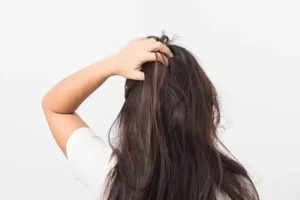If you’ve tried every acne product under the sun and nothing seems to work, your skin type might be the missing piece of the puzzle. Acne can affect oily, dry, combination, and even sensitive skin, but each type needs a different approach. The right treatment for one person can make another’s skin worse.
Let’s break down how acne develops for each skin type and how to choose products that really work for your skin.
How to Identify Your Skin Type
Before you treat acne, it’s important to understand what kind of skin you have.
Here’s a simple way to test it:
-
Wash your face with a gentle cleanser and pat it dry.
-
Wait about 30 minutes without applying anything.
-
Observe how your skin feels:
-
Oily: Noticeable shine all over the face.
-
Dry: Feels tight, flaky, or rough.
-
Combination: Oily T-zone (forehead, nose, chin) and dry cheeks.
-
Normal: Comfortable, smooth, and balanced.
-
Sensitive: Easily irritated or red after using products.
Knowing your skin type helps you choose ingredients that balance your skin instead of over-drying or over-moisturizing it.
Acne Treatments for Oily Skin
Oily skin produces more sebum, which can clog pores and trap bacteria. The goal is to reduce excess oil without stripping the skin.
Best ingredients for oily skin:
-
Salicylic acid (BHA): Unclogs pores and reduces oil buildup.
-
Niacinamide: Balances oil production and soothes redness.
-
Benzoyl peroxide: Kills acne-causing bacteria and clears active breakouts.
-
Retinoids: Increase cell turnover and prevent clogged pores.
Example routine:
-
Gel or foaming cleanser with salicylic acid.
-
Niacinamide serum (2–5%).
-
Lightweight oil-free moisturizer.
-
SPF 30+ daily, even indoors.
Pro tip: Avoid skipping moisturizer. Oily skin that is dehydrated will actually produce more oil to compensate.
Acne Treatments for Dry Skin
Dry skin can still develop acne, especially if the barrier is compromised. When skin is too dry, it produces oil unevenly, trapping dead cells and leading to clogged pores.
Best ingredients for dry skin:
-
Lactic acid or azelaic acid: Gentle exfoliation without irritation.
-
Ceramides: Repair the skin barrier and prevent moisture loss.
-
Hyaluronic acid: Hydrates deeply without clogging pores.
-
Low-dose retinol or bakuchiol: Stimulates renewal without over-drying.
Example routine:
-
Hydrating, fragrance-free cleanser.
-
Serum with niacinamide and hyaluronic acid.
-
Cream moisturizer with ceramides.
-
Broad-spectrum SPF 30+.
Pro tip: Avoid alcohol-based toners and harsh exfoliants. They strip essential oils and trigger more inflammation.
Acne Treatments for Combination Skin
Combination skin means some parts of your face are oily while others are dry or sensitive. The best approach is to treat each zone differently.
Best ingredients for combination skin:
-
Salicylic acid: Focus on the T-zone to prevent blackheads.
-
Niacinamide: Controls oil without drying the cheeks.
-
Retinoids: Smooth texture and prevent new breakouts.
-
Light moisturizers: Hydrate without heaviness.
Example routine:
-
Gentle foaming cleanser.
-
Targeted treatment serum (apply BHA to T-zone, hydrating serum to cheeks).
-
Lightweight moisturizer.
-
Daily SPF protection.
Pro tip: Multi-mask once a week. Use a clay mask on oily zones and a hydrating mask on dry areas.
Acne Treatments for Sensitive Skin
Sensitive skin reacts easily to strong actives, so the goal is to reduce inflammation and treat acne gently.
Best ingredients for sensitive skin:
-
Azelaic acid: Antibacterial, brightening, and anti-inflammatory.
-
Sulfur: Gently clears pores without irritation.
-
Niacinamide: Soothes and strengthens the skin barrier.
-
Centella asiatica (Cica): Calms redness and repairs sensitivity.
Example routine:
-
Creamy, fragrance-free cleanser.
-
Calming serum with niacinamide or Centella.
-
Non-comedogenic moisturizer for barrier repair.
-
Mineral sunscreen with zinc oxide or titanium dioxide.
Pro tip: Avoid alcohol, essential oils, and synthetic fragrance. Introduce new products one at a time and patch test first.
Common Mistakes to Avoid
Over-cleansing: Washing too often strips natural oils and worsens breakouts.
Skipping SPF: UV damage increases post-acne marks and slows healing.
Using too many actives at once: Combining retinol, acids, and benzoyl peroxide can irritate the skin and trigger more acne.
Ignoring hydration: Every skin type needs moisture. A damaged barrier can trap bacteria and increase inflammation.
Popping pimples: Creates deeper scarring and prolongs healing.
Expert FAQ About Acne Treatment by Skin Type
Can oily skin be dehydrated too?
Yes. Even oily skin can lack water, which causes it to overproduce sebum. Adding hydrating products like hyaluronic acid can reduce excess oil in the long run.
Should people with dry skin exfoliate at all?
Yes, but gently. Exfoliation helps remove dead cells that clog pores, but stick to mild acids like lactic or azelaic acid once or twice a week.
What type of sunscreen is best for acne-prone skin?
Look for lightweight, non-comedogenic sunscreens labeled “oil-free” or “gel-based.” Mineral formulas with zinc oxide work well for sensitive or oily skin.
Can moisturizer cause acne?
Only if it’s comedogenic. Choose moisturizers labeled “non-comedogenic” or “for acne-prone skin.” Even oily skin needs hydration to stay balanced.
How long does it take to see results from acne treatments?
Most people notice improvement within 6–8 weeks of consistent use. Deep or hormonal acne may take longer and often requires dermatologist guidance.
Can you combine retinoids and salicylic acid?
Yes, but use them on alternate nights to avoid irritation. Retinoids promote turnover, while salicylic acid clears clogged pores.
What if nothing works despite matching products to my skin type?
Persistent or cystic acne may need prescription treatments like topical antibiotics, oral retinoids, or hormonal therapy. A dermatologist can evaluate the cause.





